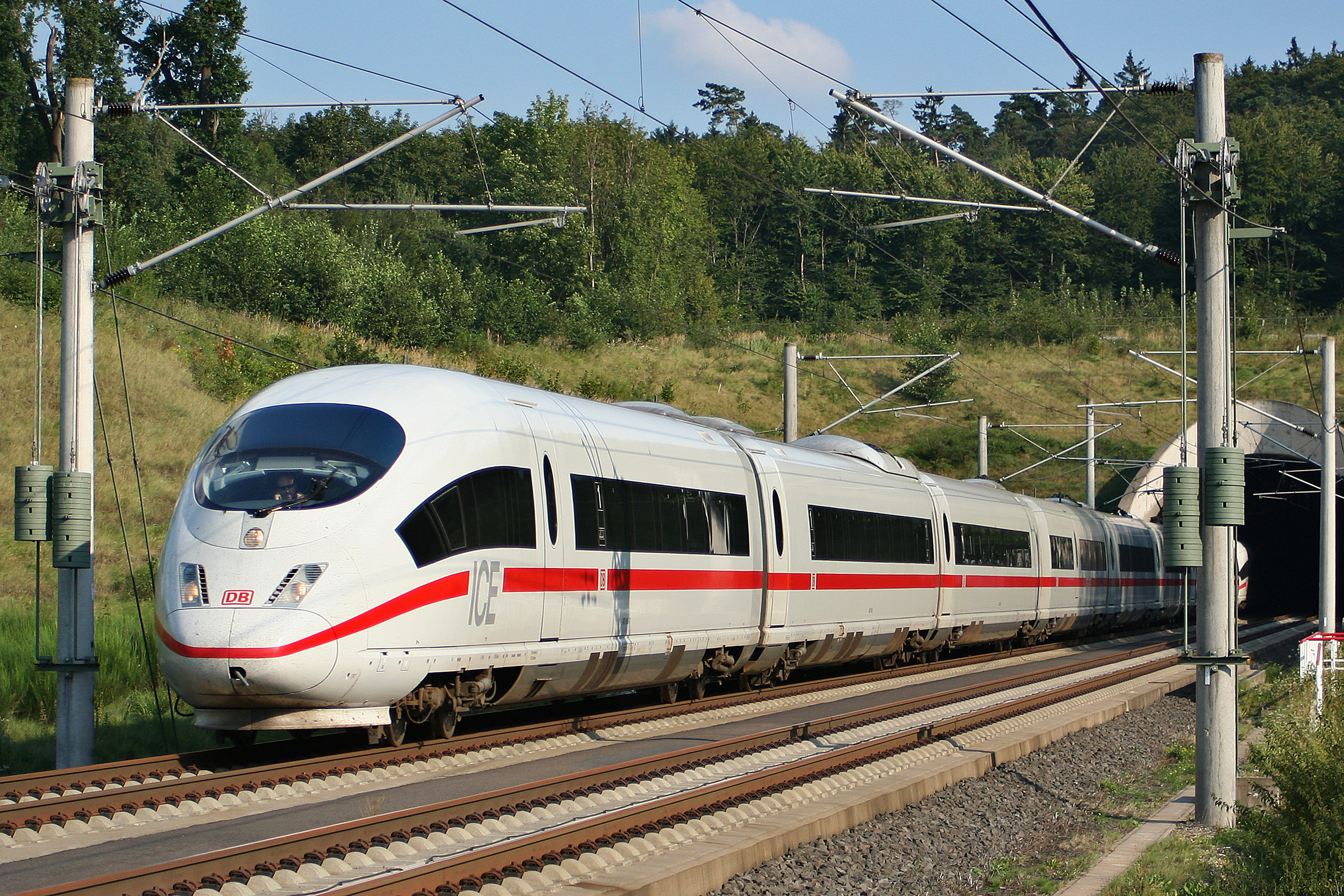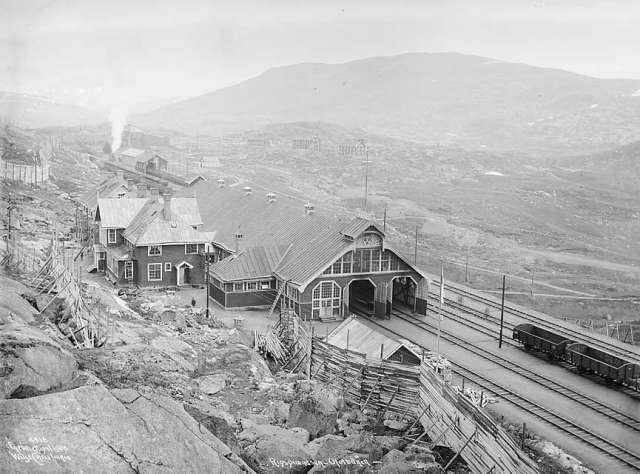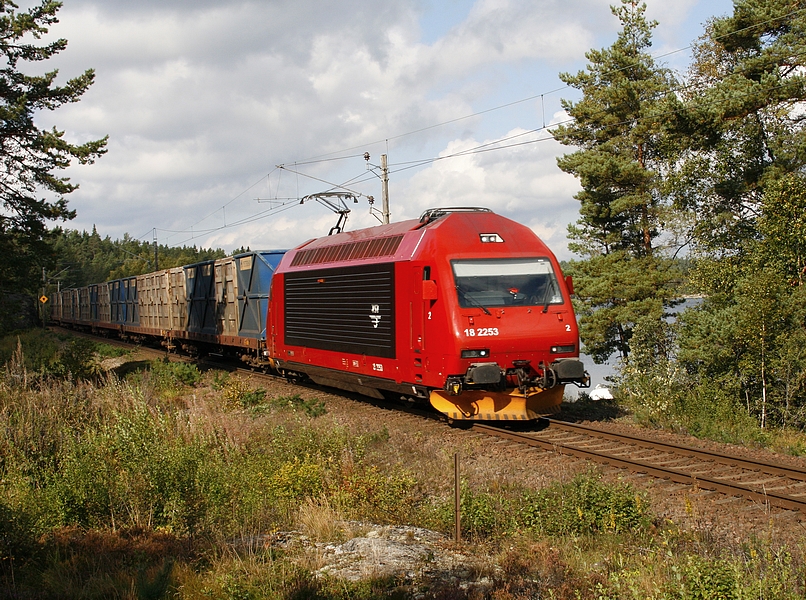|
NSB El 13
NSB El 13 is a Norwegian electric locomotive which was used by Norwegian State Railways (NSB) for both passenger and freight trains. The locomotive is a heavier and upgraded version of the NSB El 11 which was popular among its crew but unsuitable for journeys in heavy snow on lines such as the Bergen Line. Like the El 11, the El 13s were produced by Thune. The engines are very similar to the El 11, the main visual differences are that the El 13 is half a metre longer and has three, rather than four, windows at each end of the locomotive. The first of the 37 engines were built in 1957, the last in 1966. They were numbered 13 2121 to 13 2144 and 13 2151 to 13 2163. The engines were withdrawn from service during the 1990s as several passenger trains were replaced with multiple unit A multiple-unit train or simply multiple unit (MU) is a self-propelled train composed of one or more carriages joined together, which when coupled to another multiple uni ... [...More Info...] [...Related Items...] OR: [Wikipedia] [Google] [Baidu] |
Ofotbanen (company)
Ofotbanen Drift AS, trading as Ofotbanen, was a Norwegian passenger and freight railway company. The company operated a fleet of six locomotives, three multiple units, 22 passenger and 48 freight cars. The sole service was the passenger train Unionsexpressen between Oslo and Stockholm; it had previously offered freight haulage on contract. The company was founded in 2001, and took over Norges Statsbaner's (NSB) passenger operation of the Ofoten Line in 2003. The following year it entered the freight market, in particular with timber trains for Norske Skog. It further expanded into other services, such as charter trips. In 2006, the company almost went bankrupt, and was taken over by Rail Management. In 2007, the automotive distributor Autolink started purchasing the autorack operations from Ofotbanen, and at the same time bought 40% of the company. 2008 saw a dramatic decline in operations, as both the Norske Skog, Autolink and passenger train services were terminated. In April ... [...More Info...] [...Related Items...] OR: [Wikipedia] [Google] [Baidu] |
Multiple Unit
A multiple-unit train or simply multiple unit (MU) is a self-propelled train composed of one or more carriages joined together, which when coupled to another multiple unit can be controlled by a single driver, with multiple-unit train control. Although multiple units consist of several carriages, single self-propelled carriages – also called railcars, rail motor coaches or railbuses – are in fact multiple-units when two or more of them are working connected through multiple-unit train control (regardless if passengers can walk between the units or not). History Multiple-unit train control was first used in electric multiple units in the 1890s. The Liverpool Overhead Railway opened in 1893 with two-car electric multiple units, controllers in cabs at both ends directly controlling the traction current to motors on both cars. The multiple-unit traction control system was developed by Frank Sprague and first applied and tested on the South Side Elevated Railroad ... [...More Info...] [...Related Items...] OR: [Wikipedia] [Google] [Baidu] |
Railway Locomotives Introduced In 1957
Rail transport (also known as train transport) is a means of transport that transfers passengers and goods on wheeled vehicles running on rails, which are incorporated in tracks. In contrast to road transport, where the vehicles run on a prepared flat surface, rail vehicles (rolling stock) are directionally guided by the tracks on which they run. Tracks usually consist of steel rails, installed on sleepers (ties) set in ballast, on which the rolling stock, usually fitted with metal wheels, moves. Other variations are also possible, such as "slab track", in which the rails are fastened to a concrete foundation resting on a prepared subsurface. Rolling stock in a rail transport system generally encounters lower frictional resistance than rubber-tyred road vehicles, so passenger and freight cars (carriages and wagons) can be coupled into longer trains. The operation is carried out by a railway company, providing transport between train stations or freight customer facilit ... [...More Info...] [...Related Items...] OR: [Wikipedia] [Google] [Baidu] |
Bo-Bo Locomotives
B-B and Bo-Bo are the Association of American Railroads (AAR) and British classifications of wheel arrangement for railway locomotives with four axles in two individual bogies. They are equivalent to the B′B′ and Bo′Bo′ classifications in the UIC system. The arrangement of two, two-axled, bogies is a common wheel arrangement for modern electric and diesel locomotives. Bo-Bo Bo-Bo is the UIC indication of a wheel arrangement for railway vehicles with four axles in two individual bogies, all driven by their own traction motors. It is a common wheel arrangement for modern electric and diesel-electric locomotives, as well as power cars in electric multiple units. Most early electric locomotives shared commonalities with the steam engines of their time. These features included side rods and frame mounted driving axles with leading and trailing axles. The long rigid wheelbase and the leading and trailing axles reduced cornering stability and increased weight. The Bo-Bo ... [...More Info...] [...Related Items...] OR: [Wikipedia] [Google] [Baidu] |
Electric Locomotives Of Norway
Electricity is the set of physical phenomena associated with the presence and motion of matter that has a property of electric charge. Electricity is related to magnetism, both being part of the phenomenon of electromagnetism, as described by Maxwell's equations. Various common phenomena are related to electricity, including lightning, static electricity, electric heating, electric discharges and many others. The presence of an electric charge, which can be either positive or negative, produces an electric field. The movement of electric charges is an electric current and produces a magnetic field. When a charge is placed in a location with a non-zero electric field, a force will act on it. The magnitude of this force is given by Coulomb's law. If the charge moves, the electric field would be doing work on the electric charge. Thus we can speak of electric potential at a certain point in space, which is equal to the work done by an external agent in carrying a unit of positi ... [...More Info...] [...Related Items...] OR: [Wikipedia] [Google] [Baidu] |
Norwegian State Railways Locomotives
Norwegian, Norwayan, or Norsk may refer to: *Something of, from, or related to Norway, a country in northwestern Europe *Norwegians, both a nation and an ethnic group native to Norway *Demographics of Norway *The Norwegian language, including the two official written forms: **Bokmål, literally "book language", used by 85–90% of the population of Norway **Nynorsk, literally "New Norwegian", used by 10–15% of the population of Norway *The Norwegian Sea Norwegian or may also refer to: Norwegian *Norwegian Air Shuttle, an airline, trading as Norwegian **Norwegian Long Haul, a defunct subsidiary of Norwegian Air Shuttle, flying long-haul flights *Norwegian Air Lines, a former airline, merged with Scandinavian Airlines in 1951 *Norwegian coupling, used for narrow-gauge railways *Norwegian Cruise Line, a cruise line *Norwegian Elkhound, a canine breed. *Norwegian Forest cat, a domestic feline breed *Norwegian Red, a breed of dairy cattle *Norwegian Township, Schuylkill County, ... [...More Info...] [...Related Items...] OR: [Wikipedia] [Google] [Baidu] |
Thune Locomotives
Thunes Mekaniske Værksted A/S, Thune for short, was a Norwegian manufacturing company that among other things built locomotives. The production facilities were last located at Skøyen. History Thune traced its roots to a workshop founded by Anders Paulsen Thune in 1815 in Drammen. Anders Paulsen Thune was a blacksmith by profession. His son took over the enterprise,"Branntakster forteller industrihistorie" Leif Thingsrud. Oslo municipality. and in 1851 they moved to Christiania. By 1870 the production facilities were located in the street ''Ruseløkkveien''. In 1871 Andreas Laurit ... [...More Info...] [...Related Items...] OR: [Wikipedia] [Google] [Baidu] |
Ofoten Line
The Ofoten Line ( no, Ofotbanen) is a railway line in Narvik, Norway. It runs from the Port of Narvik to Riksgränsen on the Norway–Sweden border, where the line continues as the Ore Line via Kiruna and Gällivare to Luleå. The Ofoten Line is single track, electrified at and has seven stations. The line only connects to the rest of the Norwegian railway network via Sweden. The main traffic is up to 12 daily freight trains operated by Malmtrafik that haul iron ore from Sweden to Narvik. In addition, CargoNet operates container trains, branded as the Arctic Rail Express (ARE), and SJ operates passenger trains, including a night train to Stockholm. Construction of the Ofoten Line started in 1898 along with the Ore Line from Riksgränsen to Kiruna. They were completed in 1902, allowing LKAB to haul ore from their mines in Kiruna to the ice-free Port of Narvik. Operation and ownership of the line was held by the Norwegian State Railways. The line was electrified in 1915 and ... [...More Info...] [...Related Items...] OR: [Wikipedia] [Google] [Baidu] |
NSB El 18
NSB El 18 is a class of 22 electric locomotives built by Adtranz and Swiss Locomotive & Machine Works (SLM) for the Norwegian State Railways (NSB). The class is a modification of the Swiss Federal Railways Re 460 locomotive and built at Adtranz Strømmen in 1996 and 1997. The class remains the only mainline electric locomotive used by NSB, and is predominantly used on some intercity services and all night trains on the Bergen Line, Dovre Line and Sørland Line, as well as some regional trains. The locomotives are long and weigh . They have three-phase asynchronous motors with a maximum power output of , giving a tractive effort of and a maximum speed of . They have a Bo'Bo' wheel arrangement and regenerative brakes. The exterior was designed by Pininfarina and the cabs have pressurization. The units are numbered 2241 through 2262. History During the early 1990s, NSB was in need of new electric haulage for their passenger trains, as both classes El 11 and El 13 were in ne ... [...More Info...] [...Related Items...] OR: [Wikipedia] [Google] [Baidu] |
Bergen Line
The Bergen Line or the Bergen Railway ( no, Bergensbanen or nn, Bergensbana), is a long scenic standard gauge railway line between Bergen and Hønefoss, Norway. The name is often applied for the entire route from Bergen via Drammen to Oslo, where the passenger trains go, a distance of . It is the highest mainline railway line in Northern Europe, crossing the Hardangervidda plateau at above sea level. The railway opened from Bergen to Voss in 1883 as the narrow gauge Voss Line. In 1909 the route was continued over the mountain to Oslo and the whole route converted to standard gauge, and the Voss Line became part of the Bergen Line.Jernbaneverket, 2007: 44 The line is single track, and was electrified in 1954–64.Jernbaneverket, 2006: 33 The Bergen Line is owned and maintained by Bane NOR, and served with passenger trains by Vy and freight trains by CargoNet. The Flåm Line remains as the only branch line, after the closure of the Hardanger Line. The western section f ... [...More Info...] [...Related Items...] OR: [Wikipedia] [Google] [Baidu] |
Thune
Thunes Mekaniske Værksted A/S, Thune for short, was a Norwegian manufacturing company that among other things built locomotives. The production facilities were last located at Skøyen. History Thune traced its roots to a workshop founded by Anders Paulsen Thune in 1815 in Drammen. Anders Paulsen Thune was a blacksmith by profession. His son took over the enterprise,"Branntakster forteller industrihistorie" Leif Thingsrud. Oslo municipality. and in 1851 they moved to Christiania. By 1870 the production facilities were located in the street ''Ruseløkkveien''. In 1871 |
NSB El 11
The NSB El 11 was an electric locomotive which was operated for both passenger and freight trains by NSB. It was the third type of Norwegian electric locomotive with bogies, after the NSB El 7 and NSB El 9. They were manufactured by Norsk Elektrisk & Brown Boveri (NEBB) and Thune mekaniske verksted. The first 35 engines were built between 1951 and 1956 and numbered 11 2078 to 11 2112, a second series of 6 engines, the El 11b, was built between 1963 and 1964 and numbered 11 2145 to 11 2150. The b-series had minor modifications such as a windshield consisting of two large windows instead of four small ones. A further upgrade of the El 11 became the NSB El 13 locomotive. Between 1982 and 1983 three El 11s were upgraded for use on the steep Flåmsbana branch line. They have since been replaced by multiple units such as the NSB BM69 and, later, by locomotives such as the NSB El 17. The El 11s was withdrawn from service during the 1990s, with the last use in ... [...More Info...] [...Related Items...] OR: [Wikipedia] [Google] [Baidu] |
.jpg)






.jpg)